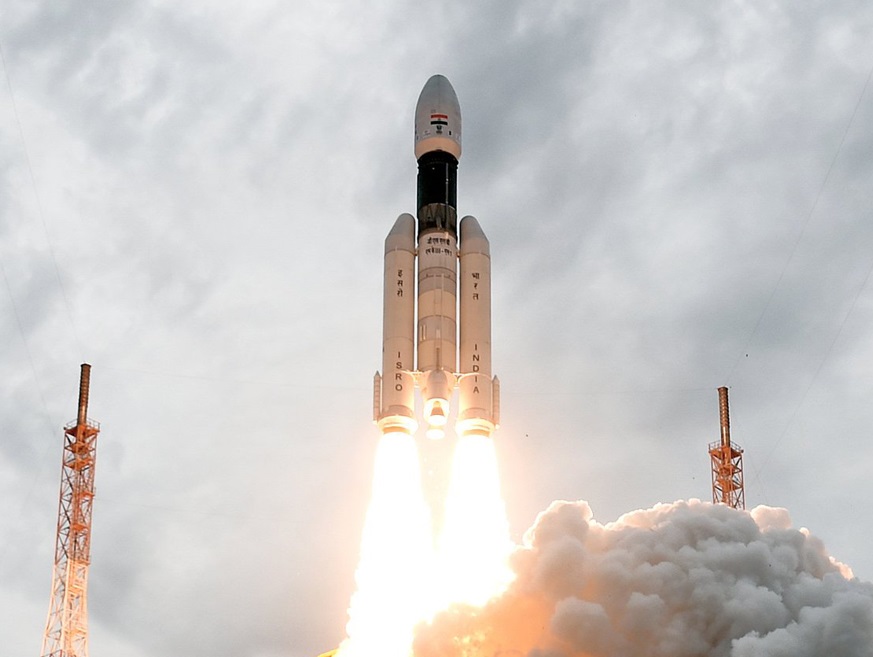The Chandrayaan- 2 was India’s second mission to the Moon that completed one year of its launch by the GSLV MkIII M1 from the Satish Dhawan Space Center in Sriharikota. On Wednesday, the Indian Space Research Organisation(ISRO) said all its eight payloads are performing well.
“Extensive data has been acquired from Chandrayaan- 2 payloads and parameters are being derived for the presence of water-ice in the polar regions, X-ray based and infrared spectroscopic mineral information and mid and high latitude presence of Argon-40, a condensable gas on the moon,” said ISRO in a statement released.
Launch of the lunar mission
Chandrayaan- 2 was India’s second mission to the moon, follow-up of the first mission Chandrayaan- 1 launched from Satish Dhawan Space Center on July 22. The mission had an orbiter, lander Vikram, and rover Pragyaan which was carried by the Geosynchronous Satellite Launch Vehicle (GSLV).
The mission was India’s first venture to attempt landing on the lunar surface. The spacecraft reach the lunar orbit on August 20. The main part of the mission was to launch the Vikram lander which has the rover Pragyaan stored inside on the lunar surface. The attempt to land the moon was initiated on September 7.
Just 2.1km above the surface of the moon, ISRO lost contact with the Vikram lander. Later it was revealed that a last-minute software glitch resulted in the failure of the mission. According to the mission, the lander was supposed to explore the lunar surface on the moon and send data for 14 days.
98 percent mission succeeded
Though the lander failed orbiter in the lunar orbit has a life span of seven years. When the Chandrayaan- 2 reaches the polar orbit the imaging IR Spectroscopy (IIRS) will record detailed mineralogical and volatile measurements on the moon. The spectral range of 0.8 to 5 micrometers with a resolution of around 20 nanometres.
At high spatial resolution around 80 metres IIRS and spectral resolution around 20 nanometres measure water/hydroxyl features. ISRO claims payloads of the mission will enable such measurements for the time at such spectral range and resolution.
The measurements taken by the IIRS is expected to provide comprehensive maps of water locations and mineralogical features on the moon. ISRO Chairman K. Sivan said Chandrayaan- 2 achieved 98 percent of the mission goals. Although the Vikram crash-landed, the orbiter is performing experiments as scheduled.
1st Anniversary
ISRO said Chandrayaan- 2 is successfully mapping the lunar surface and polar coverage as per the mission. The scientific data recorded will be released in October this year. The report related to the finding of the mission was planned to release at the Annual Lunar Planetary Science Conference in March 2020, but the event was canceled due to the Covid-19 pandemic.
“Extensive data of the Moon has been acquired from Chandrayaan- 2 payloads and parameters are being derived for the presence of water-ice in the polar regions, said ISRO.
“X-ray based and Infrared spectroscopic mineral information and mid and high latitude presence of Argon-40, a condensable gas on the Moon which gets released internally by radioactive decay of 40 K,” it noted.
Future ahead
After the failed attempt to land, Vikram on the surface on moon, ISRO has begun working to reattempt the landing on the lunar surface. Chandrayaan- 3, India’s third moon mission will launch as soon as 2021.
On January 1, this year the ISRO chairman said in a press conference that the government had sanctioned a spacecraft and rover for the next moon mission to land on the Moon’s south pole

